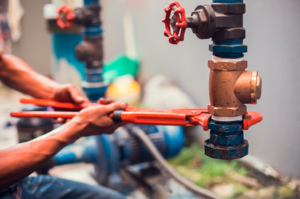With the price of vehicles now exceeding $100,000 it is important to keep your vehicle maintained. Many car owners have had the experience of having their cars detailed whether it be at a mobile detailer, car wash or a dealership. At Kolby’s Auto Spa we take detailing to a whole other level.

Your car’s exterior takes a beating year-round from the elements, road debris, and general wear and tear. Getting an auto service regularly will keep your vehicle looking and driving like the day you got it.
In addition to cleaning, a car detailer will often apply protection products to the paint and chrome to help prevent scratches, water marks, and oxidation. These protectants, which include waxes and sealants, also give the vehicle a nice, glossy shine and help to hide dirt and other imperfections.
Images Auto Spa Detailing specializes in high-quality automotive detailing services. We use the two-bucket hand wash method to avoid causing scratches, then we follow up with *clay bar treatment to remove bonded contaminants from the paint surface before applying a premium wax for long-lasting shine and protection. We can even add a color correction step, which helps to remove swirl marks and blemishes in the paint, ensuring that your car’s finish looks showroom-ready. A well-maintained exterior reflects your pride in the vehicle and can boost resale value. It will also make the vehicle easier to clean in the future.
Interior
Car services usually include some sort of check on your interior. It’s a way to keep the car running smoothly and avoid expensive problems in the future. It’s similar to a check-up at the doctor, and it will ensure that your vehicle is safe for you and other passengers.
There are different levels of service, and each one builds upon the previous one. For example, a basic service might include an inspection of the vehicle and topping up of the critical fluids (oil, oil filter, brake fluid, washer fluid, and steering fluid). If you’re not sure what level of car service you need, consult your car’s maintenance schedule.
A full service will typically include all the checks of a basic car service, plus more comprehensive work under the bonnet. This includes checking the condition of your battery, electrics, hoses and pipes, and a visual under-vehicle check. It’s also a good idea to replace any car parts that are approaching the end of their life, such as spark plugs and air filters.
A car service should also involve an inspection of your steering and suspension components. This can include checking the alignment of your wheels, and the condition of your car’s tyres and steering rack. The service should also include a check of the air pressure in your tires, and a look at any damage or wear that could affect handling.
Another important aspect of car services is a check of your advanced driver assist systems. These are important for safety, and it’s vital that they don’t get disturbed during any work on your car. This is because the sensors, cameras, and transmitters in these systems can be disrupted if they are not disconnected before you have any work done on your vehicle.
Whether you need a full car service, an interim car service, or a major service, it’s always better to do the work than wait. It will save you time, money, and stress in the long run. A car service can catch a lot of problems early, so you can keep your safety promises to yourself and other drivers on the road.
Tires & Wheels
Keeping your car’s tires and wheels in good condition can be essential to maximizing its performance, safety and overall value. Wheels are the metal rims that support the vehicle’s tires, providing structural integrity and mounting points; tires are rubber or composite components that provide traction and cushioning against road surfaces, enhancing handling and braking. Having both of these important parts functioning at optimum levels can help to prevent costly repairs and extend the life of your vehicle.
The mechanic will check and top up the oil, antifreeze, power steering fluid, washer fluid and brake fluid. They will also inspect the tyres and make sure that they have the correct air pressure and sufficient tread depth. They may also check the car’s lights, exhaust system and windscreen wipers.
A basic service typically takes about an hour to complete and will cover all of the essential maintenance tasks that your car requires between full services. This includes an engine oil change, replacing the filter and topping up vital liquids such as coolant, power steering, brake fluid and windscreen washer fluid. The technician will also check over thirty-five key components to ensure that they are working properly.
A full service typically includes all of the elements of a basic service, but it will include a more in-depth inspection and repair work on your car’s transmission. This is an extremely important service, as most transmission problems start off small and get worse over time if they are not addressed promptly.
A full service will involve flushing and replacing the transmission fluid, examining the transmission fluid level and checking for any leaks. The technician will also replace the transmission filter, which can help to extend the life of the transmission and prevent costly repairs in the future. They will also examine and adjust the drive belt to ensure that it is not loose or slipping. In addition to the above, a full service will also include the replacement of the car’s air filter and the lubrication of all of the moving parts within the engine and transmission.
Detailing
A properly-done car service includes a lot more than just washing. It involves cleaning, restoring and protecting your vehicle’s interior and exterior components. This comprehensive approach rejuvenates your car, extends its lifespan and preserves its value. It also helps reduce odors, eliminates water spots and makes your car look better than when it left the showroom. Detailing services are available for cars, trucks, RVs, buses, motorcycles and even boats.
A basic or interim service typically covers the key basics, such as an oil and filter change, a visual inspection, and top-ups of your windscreen wiper fluid, power steering fluid, engine coolant and antifreeze. It might also include an air filter replacement. Other options, depending on your vehicle and its age, may be a brake fluid flush or replacement and an inspection of up to 35 key components including the clutch, tyres, suspension and steering.
Full-service packages, usually referred to as logbook services in Australia, are designed for vehicles that are still under warranty. They are performed according to the service schedule in your car’s logbook, at set time intervals or mileage.
These services are required to keep your car’s warranty valid, and to avoid expensive breakdowns in the future. In addition to the key items covered in an interim service, these services may include replacing the radiator and water pump hoses, checking the power steering belt, alternator pulley and tensioner, and examining your car’s fuel pipes, drive shaft joints and gaiters. A full service might also include an engine diagnostics check, a complete vacuum and wash of the interior, shampooing your seats and carpets, removing road salt staining, applying leather conditioner and ozone deodorizing, and cleaning and protecting your wheels.
While it may seem daunting to choose the right car service for your vehicle, the good news is that regular servicing (talk to us about how often this should be) will help ensure your car is running at optimum levels and identifies and addresses faults early on. This will save you money in the long run and make your vehicle more reliable, as it’s less likely to break down or suffer costly damage.








